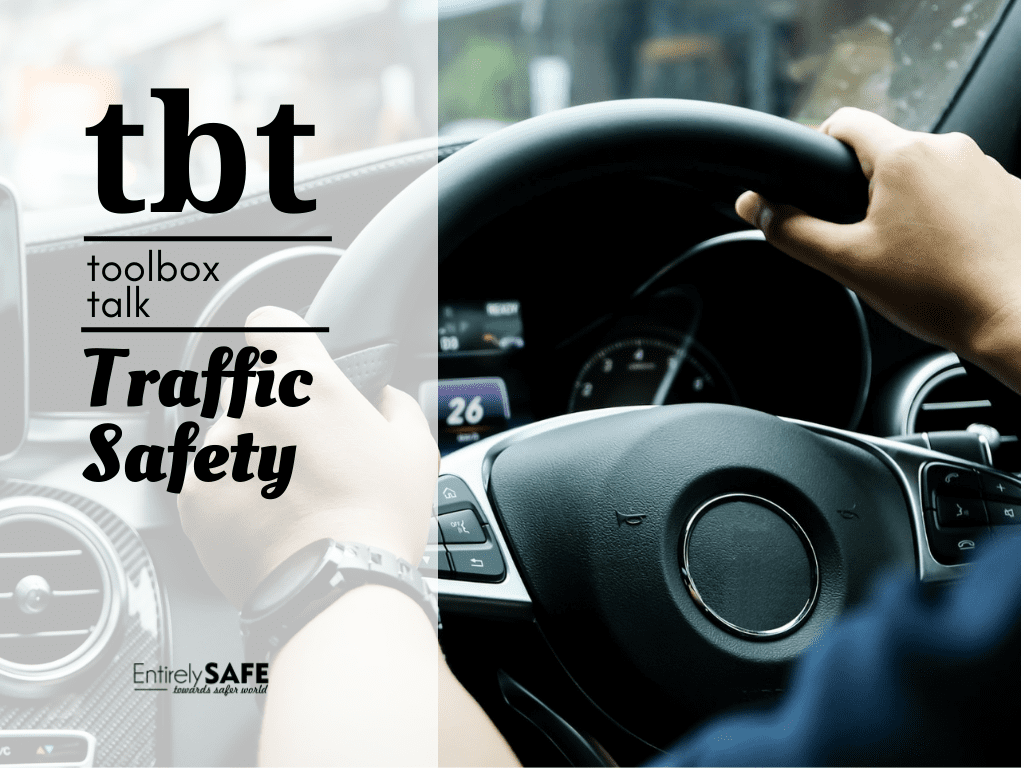Traffic Safety Toolbox Talk

Before the Toolbox Talk
This safety talk is designed for discussion leaders to use in preparing safety meetings. Set a specific time and date for your safety meeting. Publicize your meeting so everyone involved will be sure to attend. Review this safety talk before the meeting and become familiar with its content.
Make notes about the points made in this talk that pertain to your workplace. You should be able to present the material in your own words and lead the discussion without reading it.
Seating space is not absolutely necessary, but arrangements should be made so that those attending can easily see and hear the presentation. Collect whatever materials and props you will need ahead of time. Try to use equipment in your workplace to demonstrate your points.
Give the safety talk in your own words. Use the printed talk merely as a guide. The purpose of a safety meeting is to initiate a discussion of safety problems and provide solutions to those problems. Encourage employees to discuss hazards or potential hazards they encounter on the job. Ask them to suggest ways to improve safety in their area. Don’t let the meeting turn into a gripe session about unrelated topics. As a discussion leader, it’s your job to make sure the topic is safe. Discussing other topics wastes time and can ruin the effectiveness of your safety meeting.

Toolbox Talk: Traffic Safety
Highway and street construction workers are at risk of both fatal and nonfatal injuries when working near passing motorists, construction vehicles, and equipment. Each year, more than 100 workers are killed and over 20,000 are injured in the highway and street construction industry.
Jack’s Story
Jack was working as a flagger on a construction crew of 11 workers paving the northbound side of a six-lane highway. A motorist did not see him. Jack was hit by the car and ended up in the hospital.
Remember This
- To reduce their risk of injury from road traffic, workers and crew leaders can take the following actions:
- Wear high visibility clothing with a fluorescent background or reflective materials, including vests, armbands, or hats.
- Be aware of your surroundings, and identify potential hazards.
- Stay out of lanes or areas where walking is prohibited.
- Make sure you are aware of and understand the hand and other communication signals that will be used on the job site.
- Listen for reverse-signal alarms.
- Ask your supervisor about closing the road, rerouting to control traffic, or setting up barriers(concrete is more protective than cones).
- Have a traffic control expert walk or ride through the job site to look for evidence of near-misses, such as skid marks or damaged barricades.
- Use traffic control devices such as signs, warning signals, paddles, and concrete barriers consistently throughout the entire work area.
- Have flaggers use devices that increase their visibility. For example, a flashing Slow/Stoppaddle with a mounted strobe light has been found to be effective.
- Wear high visibility clothing with a fluorescent background or reflective materials, including vests, armbands, or hats.
- Be aware of your surroundings, and identify potential hazards.
- Listen for reverse-signal alarms.
- Ask your supervisor about closing the road, rerouting to control traffic, or setting up barriers (concrete is more protective than cones).
- Have flaggers use devices that increase their visibility, such as a flashing Slow/Stop paddle with a mounted strobe light.
Interactive Discussion
- Have you or someone you know been injured or nearly injured while carrying out this activity? What happened?
- How can we stay safe today?
- What do we do at the worksite to prevent injuries related to this activity?
After the Toolbox Talk
At the end of the meeting, ask employees to sign a sheet on the back of this talk as a record that they attended the safety meeting. Keep this talk on file for your records.

